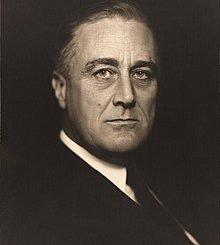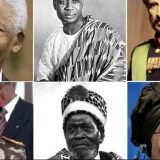President Millard Fillmore: 8 Greatest Accomplishments

Millard Fillmore – 13th President of the United States
From 1849 to 1850, Millard Fillmore was the vice president under President Zachary Taylor. However, upon the death of President Taylor in July 1850, Fillmore was sworn in and became the 13th president of the United States. His presidency occurred at a time when tensions between the North and South were high primarily due to the issue of slavery. Had it not been for the Compromise of 1850 that Fillmore helped push, the country would have tipped over into a full blown civil war in the 1850s. However, the compromise could do nothing to prevent the inevitable from happening; the American Civil War eventually broke out in the 1860s. By the time Fillmore had left office in 1853, his political career was completely ruined.
Fast Facts about Millard Fillmore, 13th president of the United States
Born: January 7, 1800 in New York
Death: March 8, 1874 at Buffalo, New York
Father: Nathaniel Fillmore
Mother: Phoebe Millard
Spouses: Abigail Fillmore (married from 1826 to 1853); Caroline Carmichael McIntosh (married from 1858 to 1874)
Children: Millard Powers (1828-1889), Mary Abigail (1832-1854)
Training and Apprenticeship: Cotton Industry
Education: New Hope Academy, and later a Trained Lawyer
Nicknames: “The American Louis Philippe”; “Last of the Whigs”
Political Party: Anti-Masonic Party (1830s); Whig Party (1840s); Know-Nothing Part/ American Party (during the 1850s)
Elected Public Offices: New York state assembly (for three terms: from 1829-1832); U.S. House of Representatives (from 1833-1835, 1837-1843); Vice president of the United States (1849-1850)
Presidency: 1850 to 1853
Predecessor: Zachary Taylor
Successor: Franklin Pierce
Most Known for: the Fugitive Slave Act of 1850 and the Compromise of 1850
Millard Fillmore’s Accomplishments
Here are some examples of President Millard Fillmore’s greatest accomplishments. It explores how the actions of Fillmore one way or the other postponed the American Civil War for about a decade.
Helped end slave trade between states
Fillmore Millard signed a Protective tariff act that facilitated the ban of slave trade between states in America.
Millard Fillmore discouraged the invasion of Cuba
When Southerners wanted to establish a slave colony and take over the Caribbean island of Cuba, Fillmore vehemently refused giving his support. Instead, he passively tried to halt the expansion of slavery in a practical manner that didn’t antagonize the South.
Successfully prevented European powers from encroaching on the Hawaiian Islands
Millard Fillmore was instrumental in preventing the likes of Napoleon III and other European countries from ceasing the Hawaiian Islands in the Pacific Ocean. This was in keeping up with the Monroe Doctrine, which basically stated that the American continent was to become a place that was off limits for European nations.
Similarly, Fillmore ratified a commercial treaty with El Salvador on January 2, 1851. The treaty was designed to help America maintain a strong foothold in Central America. By so doing, it could ward off any attempts made by European powers to recolonize the Americas.
There was also the Clayton-Bulwer Treaty (1850) that was signed between the U.S. and England. The treaty curtailed Great Britain’s excessive encroachment in Central America.
Millard Fillmore helped position the Whig Party as an alternative to the Democratic Party
When he first began his political career, Fillmore was a member of the anti-Masonic movement. It was only about six years later (in 1834) that he jumped ships and became a Whig Party member. He joined the Whigs because he had gotten frustrated with the extremist ideas of the Anti-Masonic Movement – a party that was against Irish Catholics.
Fillmore was one of the early members of the Whig Party. The Whigs was a party whose membership cut across the North and South. Beginning around the early 1830s, the Whig Party tried to position itself as a competent alternative for the Democratic Party. This made their members largely anti-Jackson (i.e. people who opposed Andrew Jackson – America’s 7th President). Understudying from key Whig Party founders such as William H. Harrison (9th U.S. president), Daniel Webster and Henry Clay, Fillmore was able to position himself as an influential member in the party.
From the 1830s to the 1860s, the Whig Party were very active in America and they went on to leave an indelible mark on the nation, thus, they could boast of four U.S. presidents, including Millard Fillmore.
President Fillmore supported the passage of the Compromise of 1850
Passed by Congress in September, 1850, the Compromise called for Texas and New Mexico to resolve their border disputes. Texas would go on to receive 10 million USD as compensation from the federal government.
The Compromise of 1850, which was pushed by Henry Clay and Fillmore, also stated that all land obtained after the Mexican-American War (1846-1848) be opened for the practice of slavery. Also in the Compromise of 1850, California was given admission into the Union, becoming the 31st state of the United States. California was to have the status as a “free” state, free from slavery. However, the states of Utah and New Mexico territories were given the right of “popular sovereignty”, which means that those areas where free to decide whether or not to keep slavery.
Another very crucial thing about the Compromise of 1850 is that it banned slave trading (not slavery) in the nation’s capital Washington, D.C.
In simple terms, President Fillmore intended the Compromise of 1850 to heal the rift that existed between the North and the South. And for a period of time, the Compromise did in fact keep things very managed and a bit under control. Thus, his actions helped keep the Union from falling into chaos for a whole decade.
Did his best to preserve the Union
In order to keep the Union alive, President Fillmore was prepared to do all that he could, even it meant using the might of the U.S. Army to enforce the Fugitive Slave Act of 1850. Bear in mind, Fillmore personally loathed slavery; however, he believed that the act was necessary to keep the nation from plunging into chaos in the form of a civil war. And he did that brilliantly. Of course he did not use the military; however, he rallied enough support from both the North and the South.
Unfortunately, his desire to please both sides ended up alienating him from the core of the Whig Party. President Fillmore literally doomed his political career in a bid to save the nation. As a result of his altruistic traits, many historians over the years have held Millard Fillmore in high regards.

International Trade and Foreign Affairs Accomplishments
In 1852, Fillmore commissioned Commodore Mathew Perry to lead an American expedition (that included warships) to the shores of Japan. The president hoped to secure trade deals and diplomatic ties with the shogunate government of Japan. The Pacific nation by then had adopted a very isolationist policy and had very little trade ties with the West. Fillmore planned to “open” up Japan’s market to American goods.
This action of Fillmore was very vital, as it allowed other Western countries to venture towards Japan, seeking for trade deals. His actions also made it possible for the signing of the Treaty of Kanagawa in 1854. Aside from the treaty bringing immense trade opportunities to the U.S., the was partly responsible for transforming the Japanese economy.
Post presidency and other notable achievements of Millard Fillmore
Once it became apparently clear that the political landscape was not so keen in Fillmore getting back into the White House, he retired to his home Buffalo, New York. However, his retirement did not stop him from contributing immensely to the social and economic development of Buffalo, New York.
Fillmore helped to establish several medical centers across the length and breadth of the state. He also had a hand in establishing the Buffalo Historical Society; the Buffalo Fine Arts Society in the state. Fillmore was also involved in the setting up of number of learning centers (including the Grosvenor Library), the University of Buffalo in New York, the Buffalo General Hospital, and the Buffalo Orphan Society. From 1846 up until his death in 1874, Fillmore was the Chancellor of the University of Buffalo.
In order to counter the alarming rate of animal cruelty and abuse (something that was very common in the 18th and 19th century), Fillmore spent his retirement founding and working extensively with the American Society for the Prevention of Cruelty to Animals (ASPCA).
In a letter to a congressman, Fillmore urged the U.S. Congress to come out with a legislation that would protect animal rights.



























